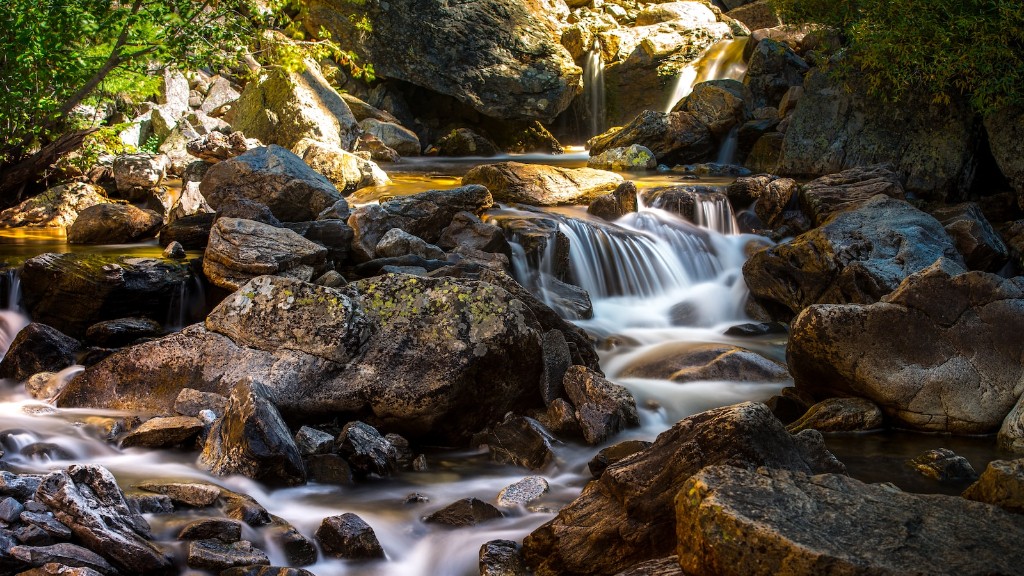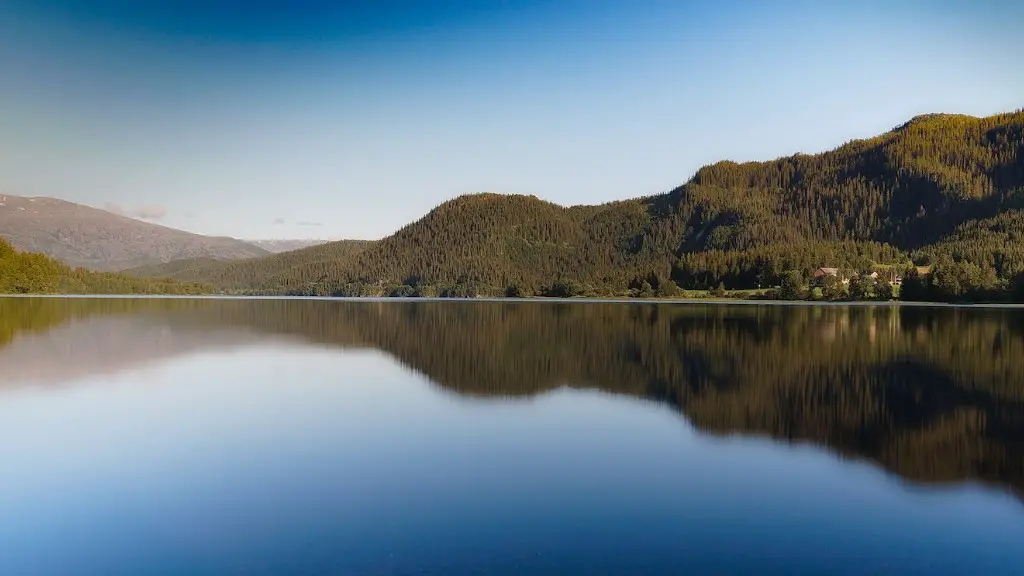Mississippi River is the second longest river in North America, stretching 2,320 miles from its source at Lake Itasca in Minnesota to its delta at the Gulf of Mexico. The river is an important commercial and tourist attraction, with a unique and enchanting variety of rocks throughout its course. There are a number of types of rocks that are commonly found in the Mississippi River today, including pebbles and cobbles, slate, shale, sandstone, conglomerate and limestone.
Pebbles and cobbles are the most common form of rock in the Mississippi River. These are often round in shape, varying in size from a few millimeters to centimeters in diameter. These rocks are created when larger rocks are eroded by the force of the river, forming small fragments. The shape and smoothness of these rocks has lead them to be popular material for decorating garden features and other decorative items.
Slate is another common rock in the Mississippi River. This is created when layers of sedimentary rock are compressed by heat and pressure, forming a hard and durable layer. Slate is distinguished by its layered, flat and often mixed textures. Most slate found in the Mississippi River is a green to gray color, although other shades may also be present. Slate has long been used for roofing and chalkboards, as it is able to stand the test of time and weathering.
Shale is another type of sedimentary rock commonly found in the Mississippi River. This rock is made up of small particles that form together to create layers. Shale is often found in layers, with the uppermost layer being soft and crumbly, while deeper layers are much harder and more durable. This rock is often used as a building material, due to its strength and hardness when compared to other sedimentary rocks.
Sandstone is also another common rock found in the Mississippi River. This is created when layers of sand are compressed by heat and pressure, forming a sedimentary rock. Sandstone can vary in color, with stains and mineral deposits giving an array of color and markings. Sandstone has been used in the construction of buildings and monuments around the world, due to its strength and durability.
Conglomerate is another type of rock found in the river. This is created when layers of pebbles and cobbles are cemented together by other minerals. Conglomerate is often distinguished by its speckled, multicolored appearance. Conglomerate is a popular building material, as it is both strong and aesthetically appealing.
Limestone is found all over the Mississippi River, the most recognizable being the Grand Canyon cliffs. Limestone is created from sedimentary rock, composed largely of calcium carbonate. Limestone is often used in construction, due to its ability to weather and stand up to exposure to water and wind. Limestone is also often used as a building material in more modern homes, as it has an attractive, elegant color and texture.
Formation of these Rocks
The rocks found in the Mississippi River were formed through a process of erosion, compaction and cementation. Erosion is when rocks are worn away and broken down into smaller pieces due to the force of the river and other elements in nature. Once the rocks are broken down, they are then compacted and cemented together, creating a solid rock. This process is known as deposition, where sediment is deposited by water and eventually turned into rock. Through this process, the variety of rocks in the Mississippi River were formed centuries ago and have stayed intact ever since.
Environmental Impact
Rocks found in the Mississippi River have an important role in the environment. They act as natural filtering agents, removing soil and debris from the water as it flows downstream. This helps to keep the water clean and free of pollutants, ensuring that it remains safe for animals and humans alike. Rocks also provide habitat for many plant and aquatic species, such as fish and amphibians, as they provide a safe haven in the river.
Uses of Mississippi Rocks
The rocks found in the Mississippi River have been used for centuries for a variety of purposes. They have been used in construction, as building materials, tools, artwork and ornaments. They are also often used as landscaping materials and to line the path of the river itself, providing stability and durability.
Furthermore, many cultures have long used these rocks for spiritual and healing purposes, believing the stones to contain special powers. The Cherokee and Catawba tribes, for example, have used the rocks for ceremonies and tribal rituals for generations. The stones are believed to be imbued with sacred energy, and are revered for their connection to the natural world.
Modern Uses
Today, the rocks found in the Mississippi River are still widely used and appreciated. They have become popular in the art and craft world, as hobbyists and crafters use them to create jewelry, sculptures, and decorative items. The beauty and variety of the rocks have also made them a popular choice for garden features and decorations. In addition, they are used to line the paths of parks and gardens, giving these places a unique and rustic feel. These rocks are also a popular choice for aquariums and water features, as they add color and texture to these areas.
Conclusion
The rocks found in the Mississippi River are a priceless resource. These rocks hold many secrets, providing a window into the history and formation of this great river. They also have an important role in the environment, acting as natural filtering agents and habitat for a variety of species. Furthermore, these rocks are widely used for recreational, spiritual and aesthetic purposes. The countless uses of these rocks show their great value and importance, not only to nature, but to our lives as well.



